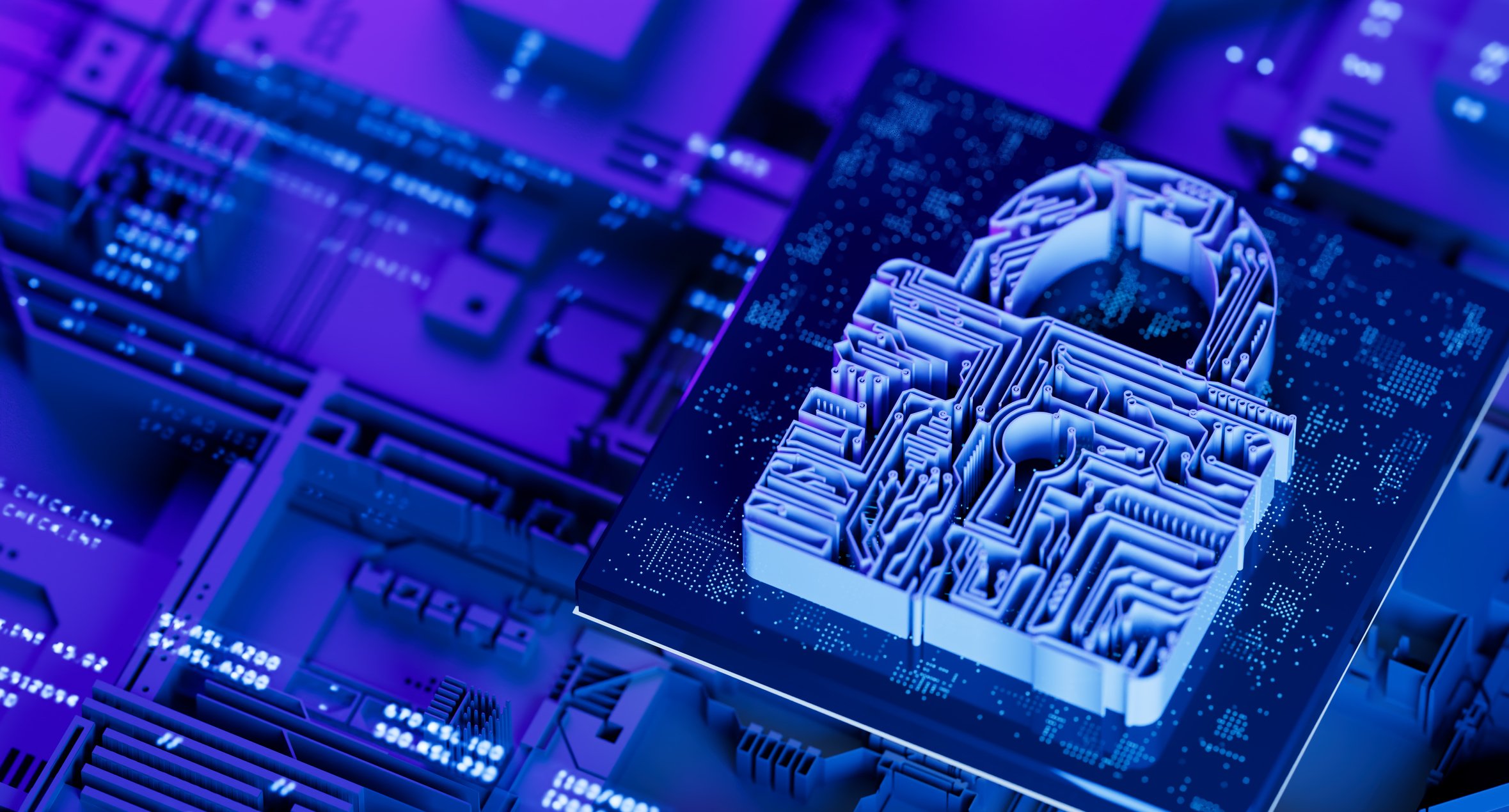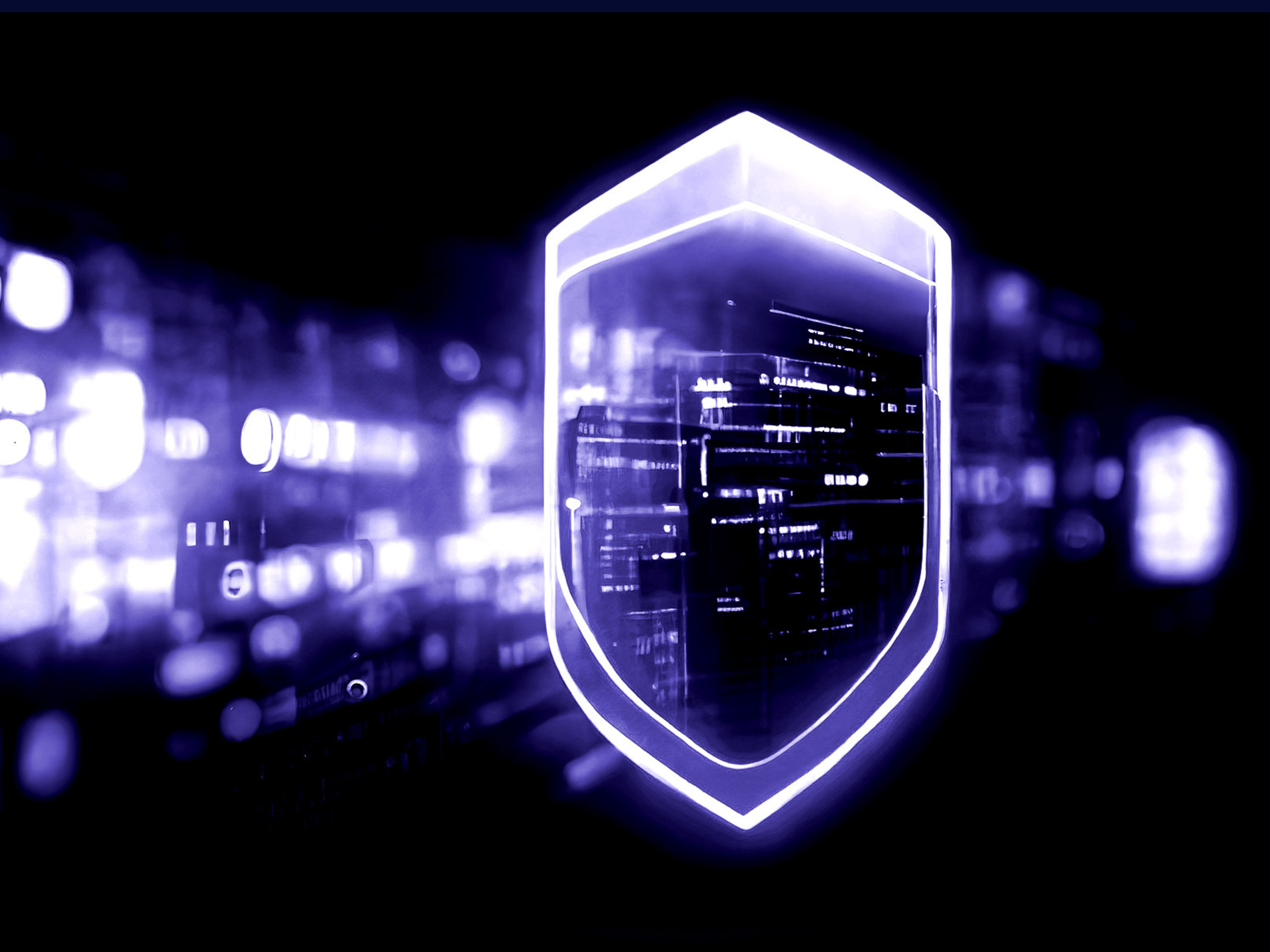As more businesses digitise and cyberattacks become increasingly complex, organisations of all kinds are realising the importance of establishing a robust cybersecurity strategy.
Enter Security Information and Event Management (SIEM). Fortunately, SIEM is a security solution that can help businesses reliably mitigate risk and safeguard sensitive data.
SIEM combines security information management (SIM) and security event management (SEM) to monitor and guard against threats. What sets SIEM apart is its ability to generate a real-time analysis of security alerts, empowering businesses to take a proactive, rather than reactive approach towards mitigating potential vulnerabilities.
This article will explore SIEM’s role in helping companies protect their data and digital assets. We will also explore the ways in which SIEM bolsters security posture, enables the detection and prevention of suspicious activities, and facilitates a quick response to security breaches. By gaining a deeper understanding of SIEM and integrating it as part of their digital strategy, businesses can stay one step ahead of cyber threats and prevent losses.
Key Takeaways
- SIEM is a crucial tool for businesses of today as it provides automated and efficient security management.
- SIEM streamlines the process of complying with regulatory frameworks.
- SIEM makes log analysis more effective.
- SIEM enables real-time monitoring, enabling businesses to take a proactive approach towards cybersecurity risks.

Top SIEM Benefits
SIEM technology offers several benefits, making it a critical component of any organisation’s cybersecurity strategy.
One of the biggest benefits of SIEM is that it can provide a real-time analysis of security alerts by correlating data from a variety of hosts and sources across the company’s IT environment. By implementing SIEM, organisations can quickly identify and respond to potential threats. In the unfortunate case of a breach, security teams can use SIEM for post-incident investigations to shed light on what went wrong.
Another advantage is that SIEM simplifies business compliance with regulatory requirements. By collecting, analysing, and centralising log data from different hosts, SIEM can help organisations demonstrate adherence to industry-specific security standards and regulations.
Additionally, SIEM enhances the overall visibility of an organisation’s digital infrastructure. By aggregating, correlating, and analysing log data from various sources and security tools in your company’s digital environment, SIEM provides a centralised, comprehensive view of the security landscape and any vulnerabilities that require action.
This improved visibility also means that businesses can have better incident response times. By automating the process of detecting security incidents, SIEM helps organisations respond quicker in mitigating the impact of breaches.
Benefits of SIEM
Businesses can undoubtedly benefit from using SIEM, due to its capacity to enhance security, improve compliance, and streamline the incident response process. Furthermore, since SIEM leverages automation, it can monitor security log data on an ongoing basis – providing businesses with a better understanding of what is going on throughout its infrastructure and facilitating immediate threat detection and response.
The following table summarises the key benefits of implementing an SIEM system and implications for your business:
|
Benefit |
Description |
Impact |
|
Enhanced Security |
SIEM solutions provide detailed visibility into network activity and log data, improving businesses’ overall security posture. |
Heightened cybersecurity risk mitigation strategy |
|
Improved Compliance |
SIEM systems simplify the time-consuming process of meeting compliance requirements by providing a comprehensive log of security events. |
Fulfilment of regulatory standards |
|
Efficient Incident Response |
SIEM allows for real-time detection and response to security threats. |
Minimised damage and downtime |
|
Streamlined Operations |
SIEM aids security operations teams and security analysts by consolidating security information and event management. |
Increased operational efficiency |
|
Proactive Threat Detection |
SIEM identifies potential threats before they impact the network. |
Enhanced capacity to take preventive, rather than reactive measures |
Download our Guide to Next-Gen SIEM to discover the full suite of benefits for organisations looking to adopt a proactive threat detection approach.

Security Posture and Teams
The implementation of SIEM can significantly enhance an organisation’s security posture and resilience against threats.
By centralising and analysing security-related data from various sources, SIEM offers a comprehensive view of an organisation’s digital and IT infrastructure, thereby enabling the quicker detection, response, and remediation of threats.
The advanced capacities of SIEM not only enhance an organisation’s overall security profile but also go further in empowering security teams and optimising their performance, by assisting them in identifying, investigating, and responding to threats with greater confidence.
Improving Security Posture with SIEM
As previously touched on, SIEM can significantly bolster an organisation’s security posture by providing a real-time analysis of security alerts generated by applications and network hardware – facilitating quick action to defend against potential cyber threats. By consolidating logs from multiple sources and hosts, SIEM improves the detection of security incidents and facilitates a swift response to potential threats.
The following table summarises how SIEM contributes to improving security posture:
| Security Information and Event Management – SIEM | Improving Security Posture | |
|---|---|---|
| Detection | Uses threat intelligence to identify anomalies and potential risks | Enhances the ability of security teams to detect security breaches proactively |
| Response | Facilitates swift action on identified threats | Improves the speed and effectiveness of security teams’ response to security incidents |
| Security Event Management | Consolidates and analyses logs from various sources, enhancing infrastructure visibility | MEnhances visibility and control over security events |
In sum, SIEM significantly enhances an organisation’s security posture by providing comprehensive threat intelligence and facilitating rapid responses to security incidents.
Enhancing Security Team Performance with SIEM
The implementation of SIEM systems significantly optimises security team performance. As discussed, SIEM provides a consolidated and centralised view of security events, providing real-time notifications that enable security teams to take prompt action.
SIEM therefore brings benefits not only to businesses overall, but also to security analysts, cybersecurity professionals, and security operations center (SOC) teams by empowering them to take action against threats. With SIEM’s security event correlation abilities, security analysts and teams no longer have to sift through data sources manually.
In addition, SIEM helps with regulatory compliance by centralising log data and simplifying the time-consuming task of creating documentation and evidence of security measures.
SIEM helps businesses save time and contribute to better risk management and regulatory compliance. Not only is it instrumental in helping security teams handle security risks but can also help make sure that businesses comply with complex cybersecurity regulations.

Detecting Suspicious Activity
As data becomes increasingly central to business success, businesses must be able to detect suspicious activity to prevent potential losses.
SIEM systems can help businesses do this through their automated threat detection abilities. SIEM consolidates and correlates disparate security data from various hosts, facilitating a comprehensive and centralised management of security information and events. This enables organisations to swiftly identify and mitigate potential risks that may otherwise go unnoticed.
Furthermore, SIEM plays a pivotal role in active network activity monitoring, providing real-time analysis of security alerts generated by network hardware and applications. These alerts help security teams quickly and accurately detect and contain suspicious activity.
Automated Threat Detection with SIEM
SIEM allows for a proactive approach to cybersecurity through automated threat detection. SIEM can detect complex, multi-stage attacks that other systems might miss by correlating data from different sources. By eliminating the possibility of human error, and enabling immediate action upon threat detection, SIEM can give companies a greater piece of mind.
Managing Security Information and Events with SIEM
Aside from the automated threat detection capabilities of SIEM, it also plays a crucial role in managing security information and events. This is done primarily through collating and analysing large volumes of security data from network devices, systems, and applications.
Here are some benefits and examples of how SIEM manages security information and events:
| Benefits | Description | Examples |
|---|---|---|
| Security Management | SIEM helps in the management and orchestration of security operations | Real-time monitoring, Incident response |
| Compliance | SIEM assists in meeting various regulatory requirements | GDPR, HIPAA |
| Log Analysis | SIEM provides in-depth log analysis to identify potential threats | Malware detection, unusual user activity |
Network Activity Monitoring with SIEM
Monitoring network activity is a critical function performed by SIEM systems. SIEM can significantly enhance network visibility by analysing security device logs from various network devices in real time as well as providing a comprehensive view of all activities and transactions occurring within a network.
Greater visibility and centralisation of the network environment are crucial in identifying unusual patterns that could indicate a security threat. SIEM also possesses robust security alerting capabilities, enabling the system to send real-time alerts upon detection of potential threats.
In addition to increasing visibility, SIEM can perform event correlation, which involves correlating security data to detect patterns and sequences. By analysing events from various sources that have been centralised rather than looking at events in isolation, SIEM can identify complex and sophisticated attacks that individual security systems may overlook.
Responding to Security Breaches, Incidents, and Events
Incident response is a crucial component of any business’s cybersecurity strategy. Given the many benefits of SIEM, an effective response to security breaches, incidents, and events today necessitates an approach that leverages SIEM. SIEM can significantly streamline the incident response process through a variety of mechanisms, cutting down on time and resources.
SIEM’s capacity to accurately detect risks while minimising false positives is driven by the application of correlation rules. Correlation rules work by telling the SIEM system which patterns or behaviours constitute anomalies, thus improving the efficiency and effectiveness of the incident response by distinguishing genuine security incidents from false alarms.
In addition to leveraging SIEM and its strong correlation capacities, SIEM can be configured to integrate third-party threat intelligence feeds. Combining threat intelligence with SIEM allows for information sharing, thereby improving businesses’ awareness of the wider security landscape. By staying updated with the latest threat information and research, organisations can better anticipate and respond to security breaches, incidents, and events, maximising the benefits of SIEM.
In summary, responding to security breaches, incidents, and events requires a comprehensive approach that includes the use of SIEM and its correlation rules and leveraging third-party threat intelligence feeds. These components work together to ensure the integrity of digital assets and enable swift containment and mitigation of potential threats.
Streamlining Incident Response Times With SIEM
SIEM improves operational efficiency by significantly reducing incident response times. The optimisation of incident response times with SIEM is achieved through several mechanisms that are hard to replicate manually:
- Centralised data consolidation: SIEM consolidates security logs from multiple security devices across the entire network, enabling a centralisation of data that facilitates quick detection and analysis of security incidents.
- Correlation and Automation: SIEM leverages automation to log and correlate data across the IT infrastructure. This automation reduces the time required to respond to security events and enhances the accuracy of cybersecurity measures.
- Regulatory Compliance: SIEM solutions also assist in meeting regulatory requirements, as they provide comprehensive visibility into the security status of the organisation.
The benefits of SIEM are multifold and can help with all aspects of business.
Integrating Threat Intelligence Feeds with SIEM
Businesses can consider implementing threat intelligence feeds alongside SIEM. This combined approach allows for more contextual analysis, empowering organisations to accurately identify and tackle potential security threats before they escalate.
Threat intelligence feeds contain data, research and insights into imminent and emerging cybersecurity threats within the wider landscape. The feeds also provide advanced analytics that can identify abnormal behaviour.
Integrating threat intelligence feeds into a SIEM system improves response time and enhances understanding of the threat landscape and latest attacks. Businesses may benefit from integrating threat intelligence feeds to enhance the impact of SIEM and mitigate complex threats or tactics.
False Positive Reduction Through Correlation Rules
Correlation rules underpin SIEM technology and work by filtering and reducing false positives.
These rules utilise complex algorithms and heuristics to correlate seemingly unrelated incidents, producing a precise interpretation of security data streams.
Correlation rules enable organisations to focus on genuine threats by reducing the volume of false positives, optimising resource allocation and enhancing security efficiency. Correlation rules help ensure that companies have an accurate and actionable understanding of their IT environment.
Malicious Activity Detection & Prevention
Malicious activity detection and prevention form a critical component of any cybersecurity strategy. SIEM utilises anomaly detection algorithms to detect malicious activities by identifying deviations from normal network behaviour patterns.
Detecting Malicious Activity Early with Anomaly Detection Algorithms
SIEM systems use anomaly detection algorithms to identify deviant behaviour. These algorithms are effective in detecting malicious activity at an early stage, isolating cyber threats such as island-hopping attacks, insider threats, and persistent threats. Early detection allows for a timely and effective defence.
| Threat Type | Signature | Detection Method |
|---|---|---|
| Island Hopping Attacks | Unusual network connections | Anomaly detection algorithms |
| Insider Threats | Strange activity in user behaviour | Realtime threat detection |
| Persistent Threats | Repeated login attempts | Threat signature analysis |
Conclusion
The threat landscape is only becoming more complex, rendering traditional cybersecurity strategies inadequate for companies looking to stay one step ahead. To avoid being breached, businesses should consider integrating SIEM into their digital infrastructure, given its many benefits.
As we have discussed, by continuously monitoring, detecting, and responding to potential threats, SIEM enables security teams to take action on a proactive rather than reactive basis. Leveraging SIEM’s advanced capacities not only bolsters companies’ security posture but can enable them to focus on other aspects of the business – optimising its overall productivity.
About Blacklight AI SIEM
Blacklight AI SIEM is a truly proactive AI-powered and cloud-native detection software. Architected, designed, and built using industry best practices, it offers the maximum level of flexibility and extensibility. At its core, Blacklight’s architecture is rooted in artificial intelligence, machine learning, and advanced analytics to empower cybersecurity professionals with the tools they need to predict, detect, and mitigate threats effectively.
Blacklight integrates with all cybersecurity solutions and serves as the command centre for any organisation. The solution enables security teams to uncover threats more efficiently, gain better visibility, significantly decrease costs, and minimise risk, all from a single platform.
Learn more: blacklightai.com
Follow us: linkedin.com/company/blacklightbyowlgaze
Book a demo: blacklightai.com/contact-us/
© 2024 Blacklight AI. All rights reserved. For permission to use the content on our website, please contact us at info@blacklightai.com

